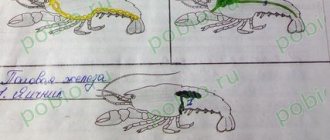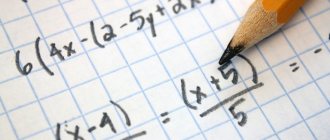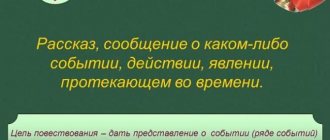Ancient Egypt test with answers
I option.
1. On the banks of which river the state of Egypt arose: a) Tigris b) Euphrates c) Nile + d) Indus
2. Which Egyptian pharaoh made the largest conquests (about 1500 BC) a) Thutmose + b) Ramses c) Tutankhamun d) Akhenaten
3. What is the name of the writing of the ancient Egyptians? a) cuneiform b) hieroglyphs + c) knot script d) kharosthi
4. “It consists of pillars dug into the ground, a crossbar between them and a pole swinging on it. At one end of the pole there is a stone, at the other there is a leather bucket.” What kind of mechanism is this? a) canal b) delta c) shaduf + d) dam
5. The city that became the capital of the state after the unification of Upper and Lower Egypt a) Hermopolis b) Memphis + c) Akhetaten d) Abydos
6. Which god was the most important among the Egyptian gods? a) God of the earth (Geb) b) Goddess of the sky (Nut) c) God of wisdom (Thoth) d) God of the Sun (Ra, Amon, Amon-Ra) +
7. When was the tallest pyramid built - the Cheops pyramid a) about 2400 g) BC b) about 2500 g) BC c) about 2600 g) BC + d) about 2700 g) BC
8. The tomb of which Egyptian pharaoh was discovered by archaeologists in the form in which it was more than 3 thousand years ago a) Thutmose II b) Khafre c) Djoser d) Tutankhamun +
9. What was used as writing material in Ancient Egypt? a) paper b) papyrus + c) parchment d) clay tablet
10. When did the first states appear on the territory of ancient Egypt? a) more than 6 thousand years ago b) more than 5 thousand years ago + c) more than 4 thousand years ago d) more than 3 thousand years ago
11. The main occupation of the ancient Egyptians was a) cattle breeding b) agriculture + c) gathering d) trade
12. What were the names of the rulers of Ancient Egypt? a) king b) raja c) priest d) pharaoh +
13. Which sea does the Nile River flow into? a) Dead Sea b) Red Sea c) Mediterranean Sea + d) Black Sea
14. In what month does the Nile flood begin? a) April b) June + c) March d) August
15. On what continent is Ancient Egypt located? a) Asia b) Africa c) Europe d) Australia
16. What material were used to make spearheads, hatchets and blades for ancient Egyptian warriors? a) copper b) bronze + c) iron d) stone
17. What are the rocky barriers at the bottom of the Nile River called? a) cliffs b) rapids + c) reefs d) shallows
18. In what month does the Nile return to its banks after the flood? a) August b) September c) October d) November +
19. What color crown did the ruler of Southern (Lower) Egypt wear? a) white + b) golden c) red d) silver
20. What is the name of the pharaoh and judge in the kingdom of the dead? a) Horus b) Anubis c) Osiris + d) Set
Option II.
1. What did the ancient Egyptians call the sacred bull? a) Apis + b) Maat c) Nut d) Apep
2. Which gold-rich country in Africa was conquered by the Egyptian pharaohs? a) Palestine b) Nubia + c) Syria d) Phenicia
3. An area in the Nile River valley similar to a triangle a) nom b) 1st threshold c) 2nd threshold d) delta +
4. Tool used by the ancient Egyptian farmer a) digging stick b) hoe + c) plow d) plow
5. Which ancient Egyptian goddess was depicted as a koshi? a) Isis b) Bastet + c) Nut d) Maat
6. What is the name of the body of the deceased, dried, soaked in resin and wrapped in thin bandages a) remains b) mummy c) sarcophagus d) inhabitant of the “land of the dead”
7. What is the height of the Cheops pyramid? a) almost 120 meters b) almost 130 meters c) almost 140 meters d) almost 150 meters
8. What wonder of the world did the ancients consider the Egyptian pyramids to be? a) the first miracle + b) the second miracle c) the third miracle d) the fourth miracle
9. An animal with the body of a lion and the head of a man is called a) mehurt b) sekhmet c) sphinx+ d) nekhbet
10. In which museum in St. Petersburg can you see Egyptian mummies and sarcophagi? a) Kunstkamera b) Hermitage + c) Museum of Urban Sculpture d) State Museum of the History of Religion
11. Determine the name of the river that flows through the territory of Egypt: a) Nile; b) Tiger; c) Euphrates
12. What was the name of the god of wisdom in Ancient Egypt? a) Ptah, b) Thoth, + c) Hebe
13. What were the names of the royal advisers, the nobility in Ancient Egypt? a) priests; b) nobles; + c) scribes
14. What was the name of the coffin where the dead pharaohs were placed in Ancient Egypt: a) sarcophagus; + b) pyramid; c) mummy
15. Where is Egypt located? a) in the north-eastern part of Africa; + b) in central Asia; c) in central Africa
16. The largest pyramid was built for this pharaoh: a) Akhenaten; b) Cheops; + c) Tutankhamun
17. Remember who had knowledge in Ancient Egypt? a) scribes + b) nobles c) priests
18. What religion was in Ancient Egypt: a) primitive; b) paganism; + c) Buddhism; d) Islam.
19. What was the name of the writing system of Ancient Egypt? a) cuneiform; b) alphabet; c) Cyrillic; d) hieroglyphs;+
20. Egypt is washed by these two seas: a) the Mediterranean Sea; + b) Red Sea; + c) Black Sea; d) Aegean Sea.
Textbook on the general history of the Ancient World. Vigasin, Goder. 5th grade. Paragraph 12
- GDZ for a textbook on the general history of the Ancient World. Vigasin, Goder. 5th grade
- GDZ for a workbook on the general history of the Ancient World. Goder. 5th grade. Part 1
- GDZ for a workbook on the general history of the Ancient World. Goder. 5th grade. Part 2
WRITING AND KNOWLEDGE OF THE ANCIENT EGYPTians
Explain the meaning of the words:
- Hieroglyph is the name of a written sign in some writing systems. Hieroglyphs can mean both individual sounds and syllables, and entire words and concepts.
- A papyrus scroll is a piece of papyrus rolled into a tube for easy storage. Papyrus was made from a wetland plant of the same name in the sedge family, cutting them into long narrow strips and folding them on top of each other in different directions, then pressing the resulting sheet with a flat stone. The reed fibers released sticky juice. After drying, a material similar to paper was obtained.
- A calendar is a system for calculating large periods of time, based on the periodicity of the movements of celestial bodies.
- Astronomy is the science of the Universe that studies the location, movement, structure, origin and development of celestial bodies and systems.
- A water clock is a device for measuring time intervals in the form of a cylindrical vessel with a flowing stream of water. Water dripped from a vessel with a small hole at the bottom: how much water poured out, so much time passed.
Test yourself
1. Why was it difficult to learn to read and write in Egypt?
There were several reasons for this. Firstly, educating children at school was not cheap; few could afford it. Children of farmers and artisans rarely became educated people. Secondly, Egyptian writing had more than 700 hieroglyphs and a complex system for using them. Not many people found it too difficult to master such a science.
2. What and how was taught in Egyptian schools?
Children in schools were taught not only to write and read, they were also taught mathematics and astronomy. The ability to count was useful in the work of a scribe, and astronomical knowledge was used to compile a calendar, predict the flood of the Nile, etc.
3. What did school graduates become?
School graduates could become scribes, officials, and later, possibly, nobles. It was very prestigious to graduate from school and become a scribe. Scribes were freed from all duties and physical labor; they could afford to wear white clothes.
4. Describe the scribe’s writing utensils from the drawing.
The writing instruments of the scribes consisted of a thin pointed reed, a pencil case with two recesses in which black and red paint were diluted with water from a small pot.
5. What does an ancient Egyptian book look like?
Ancient Egyptian books were sheets of papyrus glued together. For ease of storage, papyrus was rolled into a tube - a scroll. One museum houses a papyrus scroll more than forty meters long.
Prepare a report on how the mystery of Egyptian hieroglyphs was solved (use your textbook and Internet resources).
In the summer of 1799, Napoleon's expedition was in Egypt. While digging trenches in the vicinity of the city of Rosetta, a large stone covered with mysterious writing was dug out of the ground. Its upper part was broken off. It contains hieroglyphs arranged in fourteen lines. Moreover, they were knocked out from left to right, which is not typical for eastern languages.
The middle part of the stone's surface contained 32 lines of hieroglyphs, carved from right to left. They are the most fully preserved. On the lower part of the stone were carved writings in Greek. They were arranged in 54 lines, but were not completely preserved because a corner was broken off from the stone.
Napoleon's officers realized that they had made an important discovery. The Greek letters were immediately translated. They talked about the decision of the priests to place a statue of the ruler of Egypt, the Greek Ptolemy Epiphanes, near the statue of the deity. And designate the days of his birth and accession to the throne as temple holidays. Further there was a text stating that this inscription was repeated in the sacred hieroglyphs of Egypt and demonic signs. It is known that Ptolemy Epiphanes ruled in 196 BC. e. No one could translate the other letters.
The stone was placed in the Egyptian Institute, which was founded by Napoleon in Cairo. But the English fleet defeated the French army and strengthened itself in Egypt. The mysterious stone was transferred to the British National Museum. The mystery of Egyptian hieroglyphs has interested scientists all over the world. But finding out the answer was not so easy.
At the beginning of the 19th century, a professor at the Grenoble Institute, Jacques-François Champollion, worked on the mystery of the Rosetta Stone. He realized that there were three times as many hieroglyphs as words in Greek writing. Then Champollion had the idea that they were like letters. In the course of further work, he realized that the Egyptian alphabet contained three types of hieroglyphs. The first type is symbols that were carved on stone. They were depicted large and clear, with careful artistic drawing. The second type is hieratic signs, which are the same hieroglyphs, but not depicted so clearly. This writing was used on papyrus and limestone. The third type is the Coptic alphabet, consisting of 24 Greek letters and 7 letters and consonants.
From an inscription in Greek, he knew the place where the name of Ptolemy Epiphanes was engraved, which in Egyptian sounded like Ptolemaios. He found signs corresponding to him in the middle part of the stone. Then he replaced them with hieroglyphs and found the resulting symbols in the upper part of the stone. He guessed that the ancient Egyptians often omitted vowel sounds, therefore, the name of the pharaoh should sound differently - Ptolmis.
In the winter of 1822, Champollion received another item with inscriptions in Greek and Egyptian. He easily read the name of Queen Cleopatra in the Greek part and found corresponding signs in the writings of Ancient Egypt. He wrote other names in a similar way - Tiberius, Germanicus, Alexander and Domitian. But he was amazed that there were no Egyptian names among them. Then he decided that these were the names of foreign rulers, and phonetic signs were not used for the pharaohs.
In September 1822, the scientist received copies of inscriptions from the walls of the temple of Ramses II. Contrary to his belief not to use phonetic signs, he tried to guess the name on the inscription. So, character by character, he came up with R-e-m-s-s. If you add vowels, you get Ramesses. He was amazed by this fact. Deciding to read further in this way, he received Thoth, Thutmose. Gradually the dead symbols came to life.
It was an incredible discovery. Egyptian writing was sound! At the end of September, Champollion announced his incredible discovery to the French Academy of Sciences. Egyptian hieroglyphs told about the wars and victories of the pharaohs, about the lives of people, about the country. The decipherment opened a new stage in Egyptology.
Think
1. What does the hieroglyph mean next to the ancient Egyptian image of a scribe (see figure on p. 41)?
This hieroglyph most likely means the concept of “writing.” The beginning of a new thought, or in our language, a paragraph, is marked in red.
2. How did the expression “write from the red line” come about? What does it mean?
Since papyri was not cheap, the Egyptians saved space and indicated each new thought with a red symbol in the hieroglyph. Thus, seeing a red symbol in a hieroglyph, the reader could understand that a new paragraph was beginning. This is where the expression “writing from the red line” arose.
Get to know the document
Read the document “Teachings of Scribes to Disciples” and answer why the position of a scribe was attractive to the Egyptians. How did teachers maintain order in the classroom? What does the expression “A boy’s ears are on his back” mean?
It was highly honorable for school leavers to take up the position of scribe in the service of a pharaoh or nobleman. Scribes were respected because they were “at the feet of the ruler” and listened to his words. Scribes were exempt from all duties and physical labor and wore white clothes. But in order to become a scribe, you had to study a lot. The teachers in the schools were strict and maintained order with whips and rods. The expression “a boy’s ears are on his back” means that, according to teachers, a child hears and understands words, and becomes obedient and diligent only when he is hit on the back with a whip.
Let's summarize and draw conclusions
What natural conditions of Ancient Egypt were favorable for agriculture? How?
The ancient Egyptians lived along the banks of the Nile and were engaged in agriculture. The exceptionally hot and dry climate, deserts and arid steppes in themselves were not very conducive to the development of agriculture. Therefore, the Egyptians relied exclusively on the Nile flood. Every year in the summer at the sources of the Nile River (in equatorial Africa), the rainy season began and the glaciers in the mountains melted. Then the river bed filled with water, the Nile overflowed, flooding the coastal fields and feeding the earth with life-giving moisture. Only in November did the Nile return to its course, leaving fertile silt in the fields. After the Nile flooded, the Egyptians began the arable season.
Why was it impossible to get a good harvest in Egypt without the construction of canals and earthen embankments?
Egypt was a big country. It was necessary to feed many people, provide supplies in case of crop failure, etc., therefore it was necessary to maximize the efficiency of the fields, as well as expand the number of fields suitable for sowing. To achieve this, the Egyptians set up special irrigation systems, digging canals and diverting water to distant fields. The Egyptians also built special earthen embankments to enclose fields and retain water there after the flood was over. These measures made it possible to saturate the land with more water and increase productivity.
What similarities can be seen in the position of ordinary Egyptians and noble nobles in relation to the pharaoh?
Both ordinary Egyptians and nobles were servants of the pharaoh. They all had to obey his will and could be punished at his direction.
What did the Egyptians believe that the deceased swore at the trial of Osiris? Who was considered a good person in ancient Egypt?
The Egyptians believed that after death a person went to the court of Osiris, where he convinced the gods that he had lived a righteous life:
- I did not commit injustice against people. I did not oppress my neighbors. <-..> I did not rob the poor. I did not do anything that was not pleasing to the gods. I did not incite the servant against his master. I didn’t poison <…>.
Having listed forty-two crimes and sworn to the gods that he was not guilty of any of them, the deceased exclaimed:
- I am pure, I am pure, I am pure, I am pure, my purity is the purity of the Great Benu, who is in Neninnesut. <…> They will not harm me in the Great Hall of Two Truths, for I know the names of the gods who reside there with you.
In Ancient Egypt, a good person was considered to be a person who did not commit a crime against power, religion, property, promises and oaths, or another person.
What buildings and statues of Ancient Egypt can you name?
Step Pyramid of Djoser - The architecture of Ancient Egypt is associated primarily with pyramids. Let's start with the Pyramid of Djoser. It is one of the most distinctive historical monuments in the world, as is one of the oldest Egyptian pyramids. Created around 2650 BC, this impressive piece of architectural art is also the oldest structure in the world built of stone. The step pyramid extends 62 meters above the ground, and is dedicated to Pharaoh Djoser.
The Great Pyramids of Giza are the most recognizable, imposing and famous historical monuments in Egypt and the world. They are located in close proximity to Cairo, in the Giza region. Among them is the largest Egyptian pyramid - Cheops. With its 140 meters in height, the Pyramid of Cheops is definitely one of the most remarkable historical monuments in the world.
The Great Sphinx is a strong and majestic monument in front of the Giza pyramid complex. This giant sphinx is also the world's largest monolith statue, stretching over 70 meters in length. The height of the statue is impressive - more than 20 meters above the ground. The Great Sphinx was built around 2500 BC. In our time, it is one of the most remarkable historical monuments in Giza, Egypt, and in the world, as well as a symbol of the architecture of Ancient Egypt.
The Karnak Temples of Egypt are located on the eastern bank of the Nile River in Luxor and are a testament to the ancient architecture of Egypt. The Karnak temples consist of many temples, statues and amazing carvings. The Karnak complex includes four separate sites. Nearby you can see numerous sphinxes, which create the illusion of being surrounded by eternal animals. Everything here is rich in ancient interpretations, history and symbolism.
Temple of Hatshepsut - In addition to the high mountains and desert, another important historical monument related to the architecture of Ancient Egypt is located a few kilometers west of Luxor. This is the Temple of Hatshepsut, with one of the most breathtaking views in Egypt. The imposing architectural style of ancient civilizations is dominated by dramatic vertical cliffs.
The Valley of the Kings is a huge region on the western bank of the Nile River, close to ancient Luxor. Here are numerous burial places of Egyptian pharaohs, the famous tomb of Tutankhamun, and the great sitting colossi of Memnon.
What features did the writing created in Egypt have? What did the ancient Egyptians write on?
Ancient Egyptian writing was a complex science. The Egyptians believed that writing was invented by the god of wisdom, Thoth. The “Divine Word” was transmitted in the form of hieroglyphs. Egyptologist researchers defined “sacred writing” as pictorial writing with the addition of phonetic signs. Hieroglyphs were written in columns from left to right. Hieroglyphic signs were carved on stones, on clay tablets, carved on leather, and applied with a brush to papyrus.
Initially, Egyptian writing was figurative - i.e. one hieroglyph meant one image, one concept. Scientists call this type of writing hieratic. Gradually, writing developed into a simpler form, syllable-by-syllable - demotic. Those. each hieroglyph, meaning a specific concept, began to be used to show the consonant sounds that are in the word to which the hieroglyph indicates. This is how syllabic writing appeared. The complexity of such writing lay in the multi-valued interpretation of signs. Additional defining signs were required to clarify the meaning. They were not read, but simply suggested what was being said. This writing system was quite difficult to learn, so people who could read and write were considered true sages.
What knowledge did the Egyptian priests have?
The ancient Egyptians believed that priests had secret knowledge that allowed them to communicate with the gods. The priests were educated, they knew how to write, read, count, were familiar with astronomy and studied the laws of movement of celestial bodies. We would say that they were smart, educated and erudite. For the ancient Egyptians it was akin to magic.



